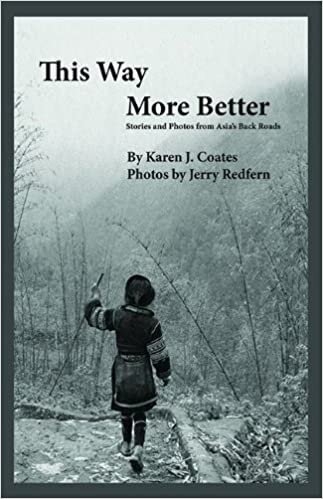Read Me a Story! : Magic Mango and Many Other Stories from Asia and the Pacific by Various authors (Asian Cultural Centre for UNESCO)
Read Me A Story! is a collection of short stories that should be read aloud to young children. The book was compiled by the Asian Cultural Centre for UNESCO (United Nations Educational, Scientific and Cultural Organization). Twenty countries contributed the stories and illustrations to this book which was first published in 1991.
The contributing countries include Papua New Guinea, India, Japan, Iran, Nepal, Mongolia, Australia, Vietnam, Republic of Korea, Laos, Myanmar, New Zealand, China, Philippines, Pakistan, Malaysia, Indonesia, Sri Lanka, Thailand, and Bangladesh. Some countries have contributed more than one story.
Magic Mango is the lead story which originated in Papua New Guinea. It’s about a mango that could think and talk. It lived at the top of a mango tree and could see many things. It could see the village by the river, it could see the mountains a long way away, and it could even see the sea. It was the mango’s wish to see all of these places but the mango couldn’t leave the tree. However, one day a very strong wind blew it off the tree. It found itself on the ground and decided to run off and see the world. During its travels, it was chased by a pig, a little boy, two women, and a hungry hunter. They all wanted to eat the mango but the mango ran and sang “I’m a magic mango, You can’t cat me. I’m off to look at the world, you see.” You will have to read the story yourself to see if the mango was eaten or not.
One of the stories contributed by the country of India is Matsya, the Beautiful Fish. This story is an Indian version of Noah’s Ark. Matsya was a small and beautiful fish that lived in the ocean. However, a bigger fish thought that Matsya might be delicious to eat. Matsya managed to run away. Another day, a fish with sharp, pointy teeth also wanted to eat Matsya but he managed to escape again. Matsya swam and swam until he came to the edge of the ocean where he met a kind fisherman named Manu. Manu and his wife watched over Matsya until he became a large fish. It was Matsya who warned the fisherman and his wife of a disaster that was going to happen. He said there would be a big flood and that Manu and his wife should build a boathouse where they will be safe. If you’re a Christian, doesn’t that sound familiar?
The story contributed by the Philippines is titled The City Mouse and The Barrio Mouse. It’s a Filipino version of the original Aesop’s Fable The Town Mouse and the Country Mouse. Americans will know the story as The Country Mouse and the City Mouse. A thirteenth century priest, Odo of Cheriton, phrased the moral of the story as, “I’d rather gnaw a bean, than be gnawed by continual fear.”
The stories contributed by my adopted country of Japan include The Magic Drum and Topsy-Turvy Rabbit known in Japan as Fushigi na Taiko and Kenta Usagi. In the first story, a man named Gengoro had a magic drum. If he beat one side of the drum and chanted “Long be the nose, long be the nose!” the nose would grow. If he beat the other side of the drum and chanted, “Short be the nose, short be the nose!”, the nose would shorten. He used this magic to make people happy. However, one day he wanted to know how long a nose could grow. He beat his drum, saying, “Long be my nose, long be my nose!” until his nose reached the clouds. However, at the time in Heaven, carpenters were making a bridge over the Amanogawa (the Milky Way). His nose appeared right where a carpenter was fixing a railing on the bridge. Gengoro thought there was something wrong with his nose, so he beat the other side of the drum but instead of his nose shrinking, his body was going up into the heavens! What will happen to Gengoro.
Topsy-Turvy Rabbit was a little boy rabbit named Kenta who decided to play a game by doing and saying everything opposite of what he really means. I’m sure most children have played this game at home, annoying their parents and siblings. I know I have. Kenta’s father said that it looks like fun and said he’ll become a topsy-turvy rabbit too. He says, “Right, I’ll have Kenta Rabbit go to the office in my place. Father Rabbit will stay home and play all day.” So, with Father Rabbit’s reverse psychology, Kenta no longer decided to be a topsy-turvy rabbit.
Every story will be sure to delight children and adults alike. Even if you have no children, all the stories should be read aloud. You may regain your sense of innocence from your childhood. ~Ernie Hoyt











